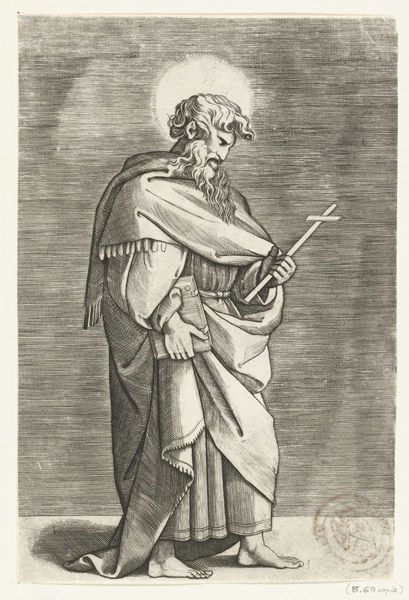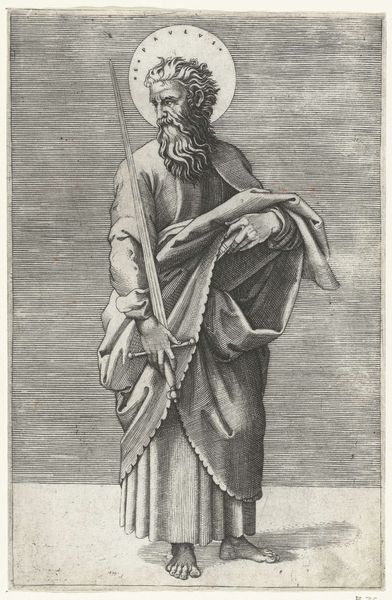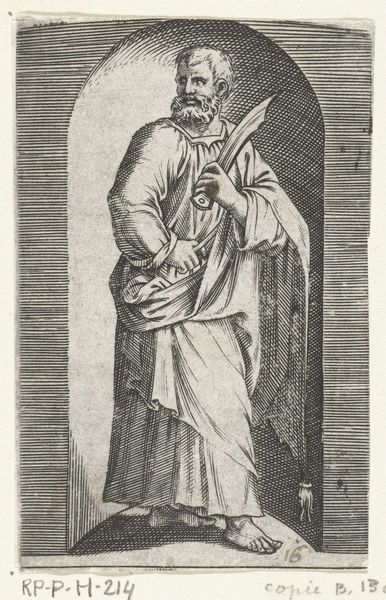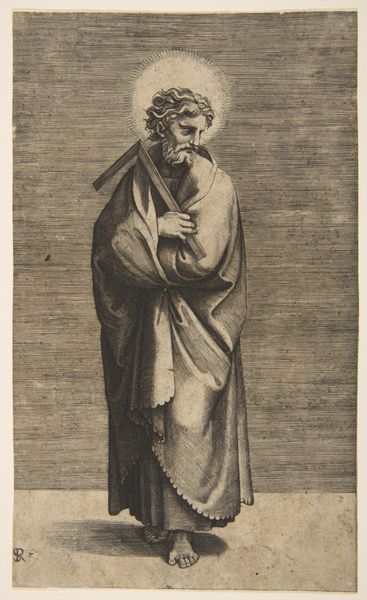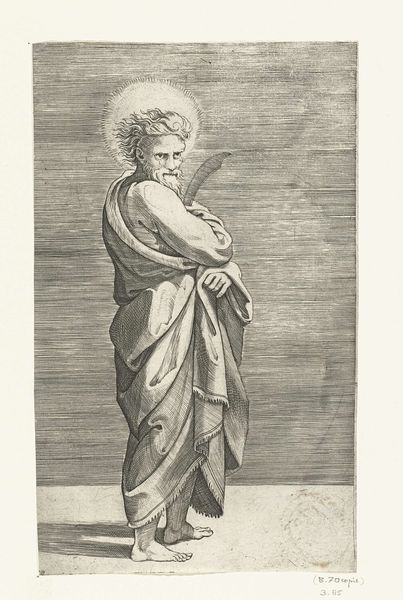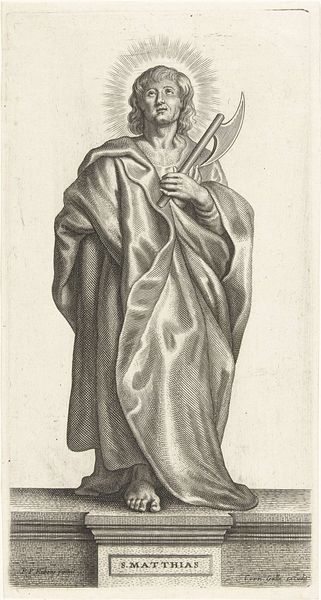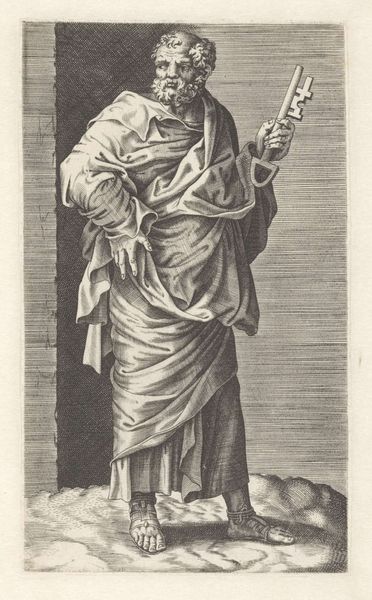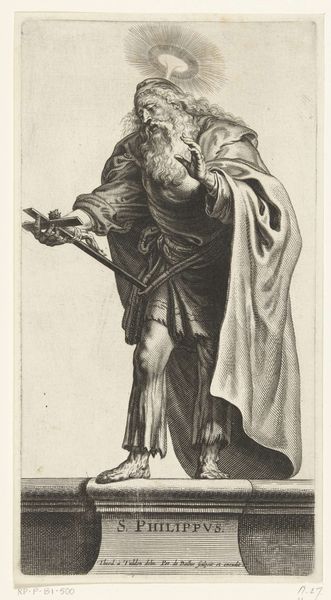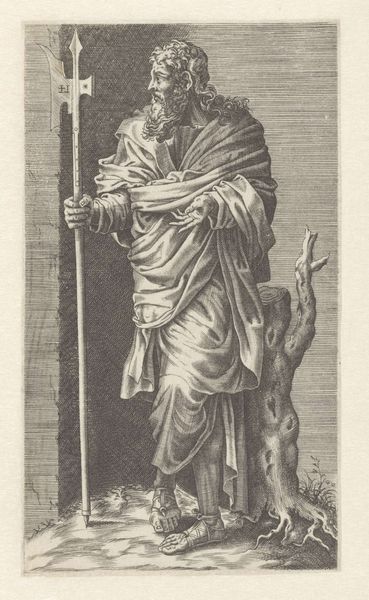
print, engraving
#
portrait
# print
#
figuration
#
portrait drawing
#
italian-renaissance
#
engraving
Dimensions: height 202 mm, width 118 mm
Copyright: Rijks Museum: Open Domain
Editor: This engraving from the Italian Renaissance, around 1517-1527, is titled "Apostel Tomas met winkelhaak," or "Apostle Thomas with a Try Square" by Marco Dente. It feels both reverent and somber. What draws your eye in this piece? Curator: The try square he carries—what does it suggest to you? Editor: Well, at first glance, it just seems like a tool, a carpenter's square, which might refer to Thomas's occupation or skill. Curator: It’s more than a tool; it's a symbolic object loaded with cultural and religious memory. In Christian iconography, St. Thomas, beyond his initial doubt, is the apostle of precision. Think about the legend – he needed physical proof of Christ's resurrection. Editor: So, the square isn’t just a mundane object; it's tied to Thomas's search for truth. It becomes a symbol for faith grounded in demonstrable reality? Curator: Precisely! The artist is imbuing the scene with a deep cultural narrative, reflecting the Renaissance's own search for rational, provable knowledge within a religious framework. The halo symbolizes saintliness, while the tool signifies something about method and proof, no? Editor: I never thought of it that way. Seeing it as a pursuit of evidence changes everything. Thanks for the illuminating perspective. Curator: Indeed! This engraving functions almost as an emotional equation, visually reconciling faith and reason, presented through carefully considered symbolism.
Comments
No comments
Be the first to comment and join the conversation on the ultimate creative platform.

